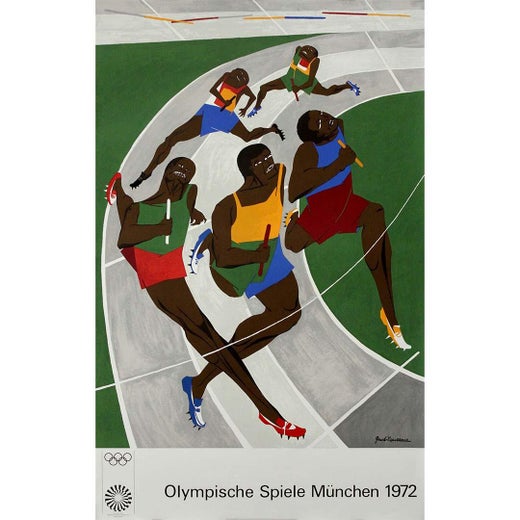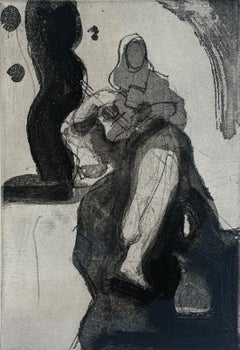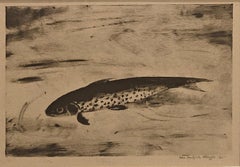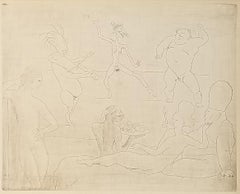Jacob Lawrence"The Capture, " Jacob Lawrence, Harlem Renaissance, Black Art, Haitian Series1987
1987
About the Item
- Creator:Jacob Lawrence (1917-2000, American)
- Creation Year:1987
- Dimensions:Height: 39.25 in (99.7 cm)Width: 28.25 in (71.76 cm)
- Medium:
- Movement & Style:
- Period:
- Condition:Excellent condition.
- Gallery Location:New York, NY
- Reference Number:1stDibs: LU1841210075272
Jacob Lawrence
One of the first Black artists to receive national acclaim in the United States, Jacob Armstead Lawrence (1917–2000) was born in Atlantic City, New Jersey, before moving to Philadelphia, Pennsylvania, and then to Harlem, New York, in 1930. While enrolled in a community after-school arts program, Lawrence developed his talents as a painter, drawing praise and encouragement from artist Charles Alston, who ran the program at the time. Despite his family’s financial struggles during the Great Depression, Lawrence continued his pursuit of the arts, developing a series of multipanel realist paintings dedicated to iconic Black historical figures, including Toussaint L’Ouverture, Frederick Douglass and Harriet Tubman. In 1938, he had his first solo exhibition at the Harlem YMCA and had begun to work for the Works Progress Administration (WPA).
In 1940, Lawrence received a grant from a philanthropic organization called the Rosenwald Fund, which allowed him to begin what would become his most famous work: The Migration Series, a narrative piece comprised of casein tempera paint on 60 18-by-12-inch hardboard panels featuring captions he’d written before he began to paint. (Fellow artist and future wife Gwendolyn Knight helped with the text.) Lawrence’s series focuses on the Great Migration of Black Americans from the agricultural South to the industrial North between 1910 and 1940.
By the end of the 1940s, Lawrence had earned widespread recognition for his important work and was the most celebrated Black artist in the United States. He continued covering Black historical figures throughout his career, though he also painted social commentaries on contemporary issues, like World War II and civil rights. He taught at the Art Students League in New York and at Black Mountain College in North Carolina (upon invitation from artist Josef Albers), among other institutions.
Lawrence’s works can be found in the collections of many major museums, including the Museum of Modern Art, the Metropolitan Museum of Art and the Whitney Museum of American Art in New York and elsewhere. His painting The Builders hangs in the White House today, as it was acquired by the White House Historical Association in 2007.
Find watercolor paintings, prints and more by Jacob Lawrence on 1stDibs.
You May Also Like
1930s American Modern Figurative Prints
Paper, Screen
1960s American Modern Figurative Prints
Paper, Ink, Screen
1970s American Modern Abstract Prints
Laid Paper, Screen
1970s American Modern Figurative Prints
Paper, Screen
1980s American Modern Interior Prints
Laid Paper, Screen
1960s American Modern Abstract Prints
Screen
1960s American Modern Abstract Prints
Screen
1960s American Modern Abstract Prints
Screen
1960s American Modern Abstract Prints
Screen
1960s American Modern Abstract Prints
Screen
More From This Seller
View All1990s American Modern Figurative Prints
Paper, Etching
1930s American Modern Animal Prints
Paper, Monotype
1980s Feminist Figurative Prints
Paper, Screen
Early 1900s Modern Figurative Prints
Paper, Etching
1980s Photorealist Figurative Prints
Screen
1930s Modern Figurative Prints
Lithograph



